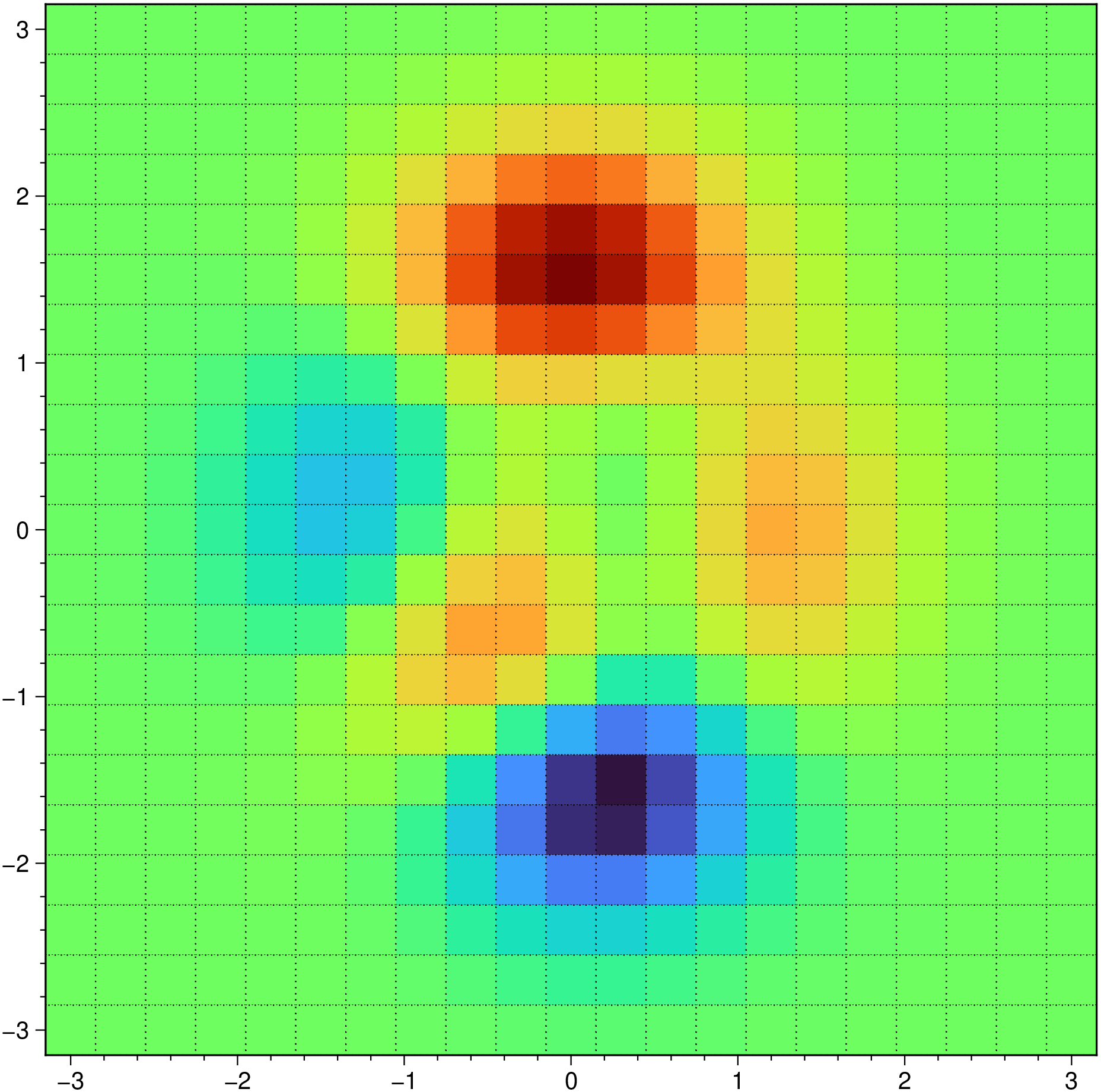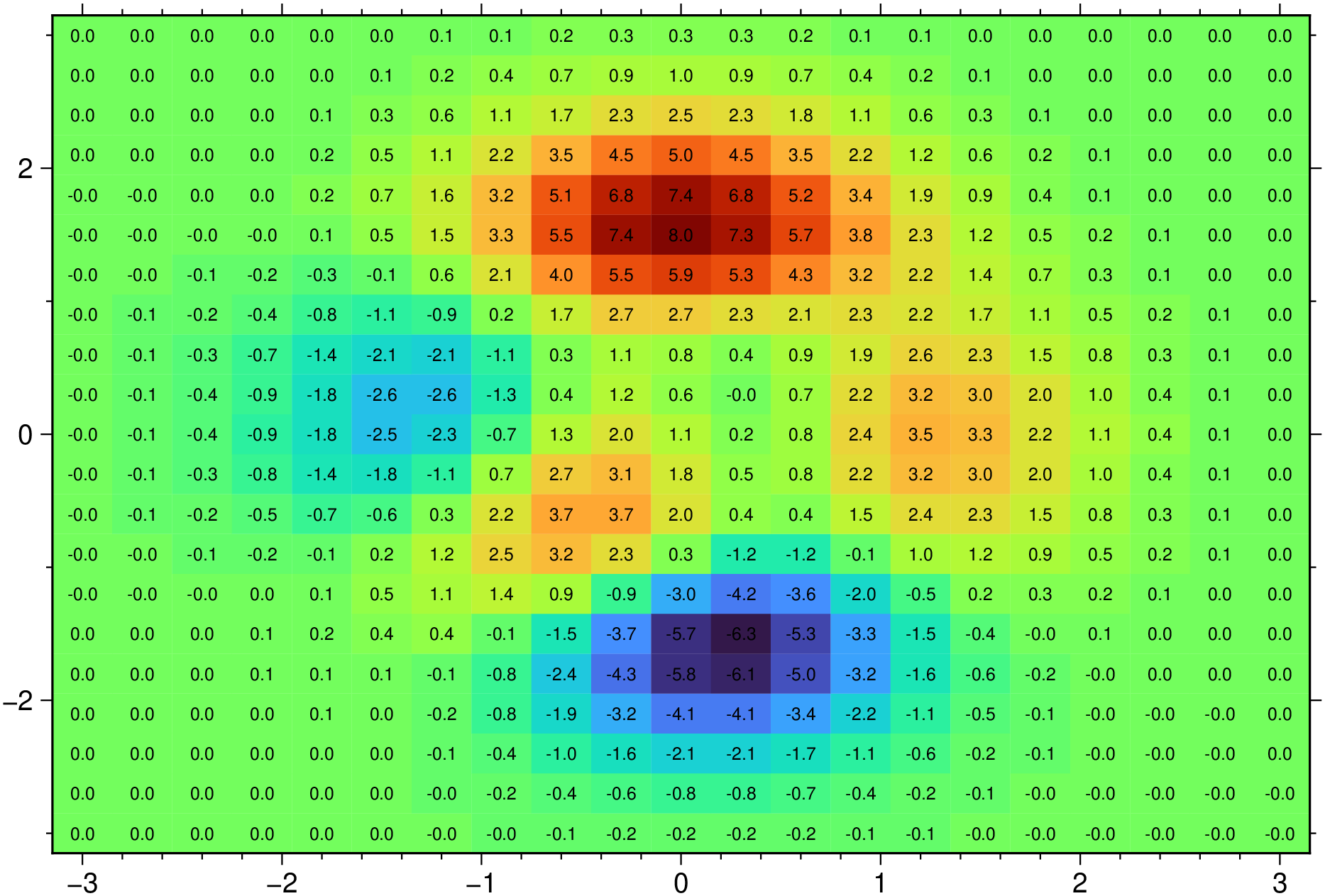pcolor
pcolor(X, Y, C::Matrix{<:Real}; kwargs...)keywords: GMT, Julia, grid, pseudo-color plots
Creates a colored cells plot using the values in matrix C. The color of each cell depends on the value of each value of C after consulting a color table (cpt). If a color table is not provided via option cmap=xxx we compute a default one.
X,Y: Vectors or 1 row matrices with the x- and y-coordinates for the vertices. The number of elements ofXmust match the number of columns inC(is using the grid registration model) or exceed it by one (pixel registration). The same forYand the number of rows inC. Notice thatXandYdo not need to be equispaced.X,Y: Matrices with the x- and y-coordinates for the vertices. In this case the ifXandYdefine an m-by-n grid, thenCshould be an (m-1)-by-(n-1) matrix, though we also allow it to be m-by-n but we then drop the last row and column fromCC: A matrix with the values that will be used to color the cells.kwargs: This form ofpcoloris in fact a wrap up of plot so any option of that module can be used here.labels: If thiskeywordis used then plot the value of each node in the corresponding cell. Uselabel=n, wherenis integer and represents the number of printed decimals. Any other value liketrue,"y"or:ytells the program to guess the number of decimals.font: Whenlabelis used one may also control text font settings. Options are a subset of thetextattriboption. Namely, the angle and thefont. Example:font=(angle=45, font=(5,:red)). If not specified, it defaults tofont=(font=(6,:black),).
D = pcolor(X, Y; kwargs...)This form, that is without a color matrix, accepts X and Y as before but returns the tiles in a vector of GMTdatasets. Use the kwargs option to pass for example a projection setting (as for example proj=:geo).
pcolor(G::GMTgrid; kwargs...)This form takes a grid (or the file name of one) as input an paints it's cell with a constant color.
outline: Draw the tile outlines and specify a custom pen if the default pen is not to your liking.kwargs: This form ofpcoloris a wrap of grdview so any option of that module can be used here. One can for example control the tilling option viagrdview'stilesoption.
Examples
using GMT
G = GMT.peaks(N=21); # Create an example grid
pcolor(G, outline=(0.5,:dot), show=true)Now use the G x,y coordinates in the non-regular form
using GMT
pcolor(G.x, G.y, G.z, show=true)Add labels to cells using default settings (font size = 6p)
using GMT
pcolor(G.x, G.y, G.z, labels=:y, show=true)Similar to above but now set the number of decimlas in labels as well as it font settings
using GMT
pcolor(G.x, G.y, G.z, labels=2, font=(angle=45, font=(5,:red)), show=1)An irregular grid
using GMT
X,Y = GMT.meshgrid(-3:6/17:3);
XX = 2*X .* Y; YY = X.^2 .- Y.^2;
pcolor(XX,YY, reshape(repeat([1:18; 18:-1:1], 9,1), size(XX)), lc=:black, show=true)See Also
These docs were autogenerated using GMT: v1.16.0




